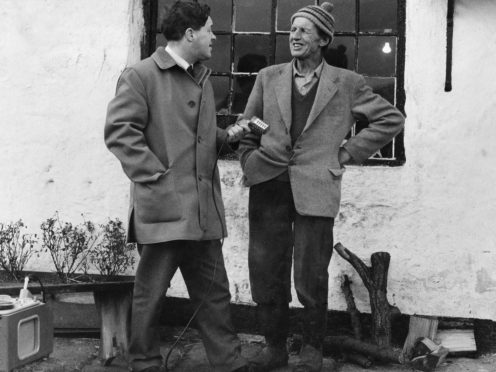Researchers are investigating whether people are still using words like coochy-pawed and ferntickles.
Field workers travelled across England in the 1950s asking people about their words for everyday objects.
Now, for the first time, they will update the “most comprehensive survey of England’s dialects ever undertaken”, after securing more than £500,000 from the National Lottery Heritage Fund.
The archive, at Leeds University Library’s Special Collections, will also be opened up to the public.

Researchers will look at how dialects have changed over time and want to speak to descendants of the original interviewees.
The original field workers painstakingly recorded dialect variations in handwritten notebooks, and later with cumbersome reel-to-reel tape recorders sometimes hooked up to car batteries because of a lack of mains electricity.
Words such as ferntickles (freckles), coochy-pawed (left-handed), and spindleshanks (daddy long-legs) were recorded.
Workers interviewed “old men with good teeth” – over-65s were preferred as they were more likely to use traditional dialect while having your own teeth meant you spoke clearly.
Men in rural areas were mostly interviewed, about farming, animals, nature, the human body, family, food and the weather – while women were largely restricted to talking about housekeeping, cooking and the laundry.

Fiona Douglas, lecturer in English language in the University Of Leeds’ School Of English, said her criteria would be very different.
“I’m not just going out looking for old men with good teeth who haven’t moved anywhere,” she said.
“I want to be able to see how much dialect has changed.
“We will speak to people whose families haven’t stayed in one area for generations, as well as those who can trace their roots back to the same place over hundreds of years. We want to include everyone’s language.”
She added: “Dialect is a really good way of getting a window into the language of the past.”
The original researchers were concerned, after the war, that dialect was going to disappear forever as people were becoming much more mobile, she said.
“People have been saying that since the 18th century. Of course it hasn’t disappeared but it has changed. They saw it as a race against time.”

She added: “If you, your parents, grandparents or other relatives have a connection to these historical dialect studies, the project would like to hear from you…
“Sometimes people feel embarrassed, saying ‘Oh, it’s slang’. When you can say to somebody ‘It’s not, and it’s got a really long, distinguished and historical pedigree, suddenly you get people with this sense of empowerment.”
Notebooks, photographs, word maps and audio recordings from the original fieldwork will be digitised in a three-year project.
Leeds Archive of Vernacular Culture contains records and artefacts relating to more than 300 English dialects and the traditions and lifestyles of their speakers.
A roadshow, complete with pop-up dialect kit, will go on tour as part of the project’s ongoing work with five museums – Avoncroft Museum of Historic Buildings in Worcestershire, Dales Countryside Museum and Ryedale Folk Museum in North Yorkshire, Suffolk’s Museum of East Anglian Life, and Weald and Downland Living Museum in West Sussex.
As well as the £530,500 National Lottery Heritage Fund grant, the University of Leeds’ Footsteps Fund and other alumni donations have contributed almost £110,000 to the project, plus up to £23,000 from the partner museums.
Examples of dialect found in the original survey:
Freckles – ferntickles, murfles, brannyspreckles, brunny-spots, vrackles or frantittles
Left-handed – cack-handed, cat-handed, coochy-pawed, gibble-fisted, left-kaggy, squippy
Packed lunch – A bait, jock, snap
Splinter – spelk, spell, shive, spill
Icicles – ice-bugs, ice-candles, ice-daggles, ice-shoggles, ickles, clinkers, icy-bells, conker-bells
Daddy long-legs – May maid, john long-legs, long-legged-tailor(s), jenny-splinters, lady-milord, spindleshanks, harvest men
Cobbler – shoe-mender, greither, nobby, shoey, snobbler, stubby
Porridge-stick – mundle, patter, pot-stick, thrivel, speltle, gull-thivel
A gossip – blatherskite, cagmag, cank, jaffock, yapper, chammer, gallivanter
Bogeyman – boggart, bogle, bobby, bugaboo, jenny wisp, old harry
Information can be found at https://library.leeds.ac.uk/info/1607/projects/181/dialect_and_heritage
